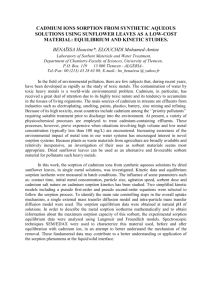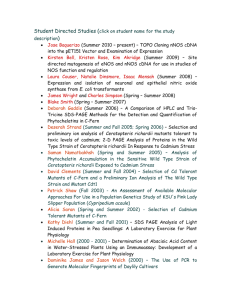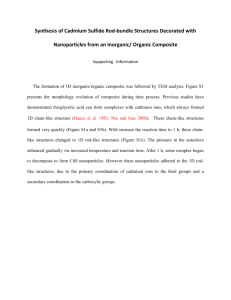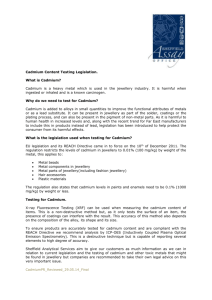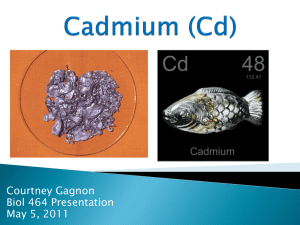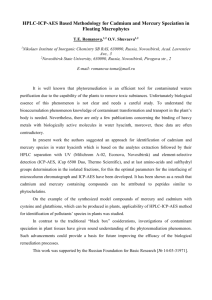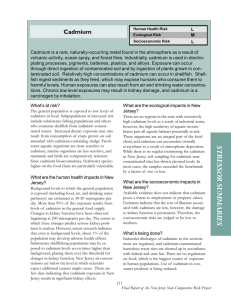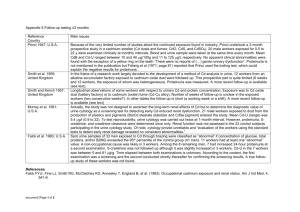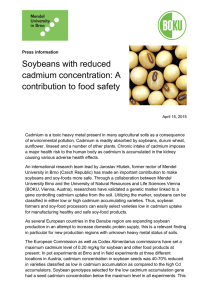Transport of cadmium in macroporous soil during heavy rainstorm
advertisement
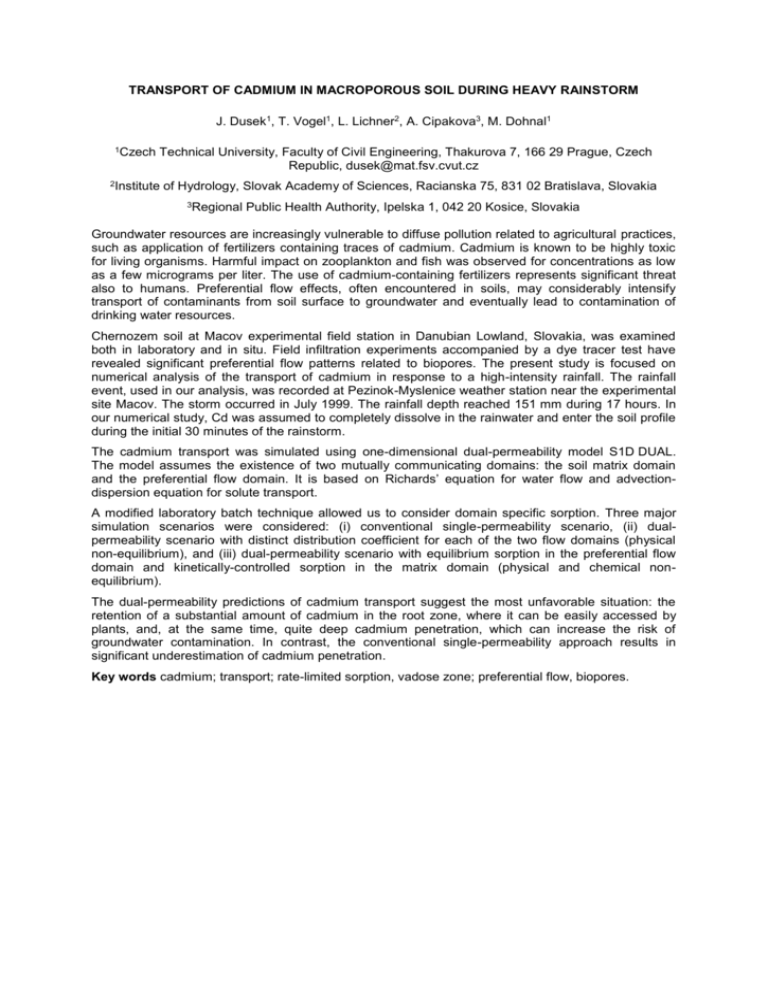
TRANSPORT OF CADMIUM IN MACROPOROUS SOIL DURING HEAVY RAINSTORM J. Dusek1, T. Vogel1, L. Lichner2, A. Cipakova3, M. Dohnal1 1Czech Technical University, Faculty of Civil Engineering, Thakurova 7, 166 29 Prague, Czech Republic, dusek@mat.fsv.cvut.cz 2Institute of Hydrology, Slovak Academy of Sciences, Racianska 75, 831 02 Bratislava, Slovakia 3Regional Public Health Authority, Ipelska 1, 042 20 Kosice, Slovakia Groundwater resources are increasingly vulnerable to diffuse pollution related to agricultural practices, such as application of fertilizers containing traces of cadmium. Cadmium is known to be highly toxic for living organisms. Harmful impact on zooplankton and fish was observed for concentrations as low as a few micrograms per liter. The use of cadmium-containing fertilizers represents significant threat also to humans. Preferential flow effects, often encountered in soils, may considerably intensify transport of contaminants from soil surface to groundwater and eventually lead to contamination of drinking water resources. Chernozem soil at Macov experimental field station in Danubian Lowland, Slovakia, was examined both in laboratory and in situ. Field infiltration experiments accompanied by a dye tracer test have revealed significant preferential flow patterns related to biopores. The present study is focused on numerical analysis of the transport of cadmium in response to a high-intensity rainfall. The rainfall event, used in our analysis, was recorded at Pezinok-Myslenice weather station near the experimental site Macov. The storm occurred in July 1999. The rainfall depth reached 151 mm during 17 hours. In our numerical study, Cd was assumed to completely dissolve in the rainwater and enter the soil profile during the initial 30 minutes of the rainstorm. The cadmium transport was simulated using one-dimensional dual-permeability model S1D DUAL. The model assumes the existence of two mutually communicating domains: the soil matrix domain and the preferential flow domain. It is based on Richards’ equation for water flow and advectiondispersion equation for solute transport. A modified laboratory batch technique allowed us to consider domain specific sorption. Three major simulation scenarios were considered: (i) conventional single-permeability scenario, (ii) dualpermeability scenario with distinct distribution coefficient for each of the two flow domains (physical non-equilibrium), and (iii) dual-permeability scenario with equilibrium sorption in the preferential flow domain and kinetically-controlled sorption in the matrix domain (physical and chemical nonequilibrium). The dual-permeability predictions of cadmium transport suggest the most unfavorable situation: the retention of a substantial amount of cadmium in the root zone, where it can be easily accessed by plants, and, at the same time, quite deep cadmium penetration, which can increase the risk of groundwater contamination. In contrast, the conventional single-permeability approach results in significant underestimation of cadmium penetration. Key words cadmium; transport; rate-limited sorption, vadose zone; preferential flow, biopores.
